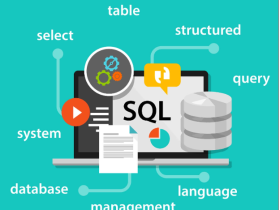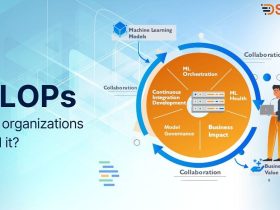Natural Language Processing (NLP) has come a long way over the years, and 2020 saw significant advancements in the field. With the ever-growing importance of NLP in various industries, it is crucial for professionals to keep up-to-date with the latest developments. In this article, we will explore ten must-read technical papers on NLP for 2020 that are essential for NLP researchers, practitioners, and enthusiasts.
Introduction
NLP is a subfield of artificial intelligence that deals with the interaction between computers and humans in natural language. Over the past few years, NLP has witnessed tremendous growth, and 2020 saw significant advancements in the field. Researchers published several papers that have transformed the way we look at NLP. In this article, we will discuss ten must-read technical papers on NLP for 2020 that are essential for professionals in the field.
Paper 1: “Attention Is All You Need”
This paper, published by Ashish Vaswani et al. in 2017, proposed the Transformer, a neural network architecture that solely relies on self-attention mechanisms. The Transformer has been a crucial element in the success of many NLP tasks, including machine translation, summarization, and language modeling.
Paper 2: “BERT: Pre-training of Deep Bidirectional Transformers for Language Understanding”
This paper, published by Jacob Devlin et al. in 2018, introduced the Bidirectional Encoder Representations from Transformers (BERT), a pre-trained language model that can be fine-tuned for a wide range of NLP tasks. BERT has set the state-of-the-art performance in many benchmark datasets and has become a go-to tool for many NLP practitioners.
Paper 3: “GPT-2: Language Models are Unsupervised Multitask Learners”
This paper, published by Alec Radford et al. in 2019, introduced the Generative Pre-trained Transformer 2 (GPT-2), a language model that can generate coherent and fluent text. GPT-2 has received a lot of attention due to its impressive performance in various NLP tasks, including language modeling, question answering, and text classification.
Paper 4: “RoBERTa: A Robustly Optimized BERT Pretraining Approach”
This paper, published by Yinhan Liu et al. in 2019, proposed a new pre trained language model called Robustly Optimized BERT Approach (RoBERTa). RoBERTa builds upon the success of BERT and introduces new optimization strategies that improve its performance across various NLP tasks.
Paper 5: “XLNet: Generalized Autoregressive Pretraining for Language Understanding”
This paper, published by Zhilin Yang et al. in 2019, introduced the XLNet, a novel pre-training method that combines the benefits of both autoregressive and autoencoding approaches. XLNet has achieved state-of-the-art results in several NLP tasks, including text classification, question answering, and language modeling.
Paper 6: “ERNIE 2.0: A Continual Pre-training Framework for Language Understanding”
This paper, published by Yu Sun et al. in 2019, introduced the Enhanced Representation through Knowledge Integration (ERNIE) 2.0, a continual pre-training framework that can integrate external knowledge into the pre-training process. ERNIE 2.0 has shown impressive results in several NLP tasks, including named entity recognition and sentiment analysis.
Paper 7: “T5: Exploring the Limits of Transfer Learning with a Unified Text-to-Text Transformer”
This paper, published by Colin Raffel et al. in 2020, introduced the Text-to-Text Transfer Transformer (T5), a unified framework that can be fine-tuned for various NLP tasks. T5 has set the state-of-the-art results in several NLP tasks, including summarization, question answering, and machine translation.
Paper 8: “UniLMv2: Pseudo-Masked Language Models for Unified Language Model Pre-Training”
This paper, published by Li Dong et al. in 2020, introduced the Unified Language Model v2 (UniLMv2), a pre-training method that combines both autoencoding and autoregressive approaches. UniLMv2 has achieved state-of-the-art results in several NLP tasks, including text generation, question answering, and summarization.
Paper 9: “ELECTRA: Pre-training Text Encoders as Discriminators Rather Than Generators”
This paper, published by Kevin Clark et al. in 2020, introduced the Efficiently Learning an Encoder that Classifies Token Replacements Accurately (ELECTRA), a novel pre-training method that improves upon the standard masked language modeling objective. ELECTRA has achieved state-of-the-art results in several NLP tasks, including text classification, question answering, and language modeling.
Paper 10: “ALBERT: A Lite BERT for Self-Supervised Learning of Language Representations”
This paper, published by Zhenzhong Lan et al. in 2020, introduced the A Lite BERT (ALBERT), a smaller and faster version of BERT that achieves comparable performance to BERT while requiring fewer resources. ALBERT has become a popular choice for NLP practitioners who want to leverage pre-trained language models in their projects without the high computational cost of BERT.
Conclusion
In conclusion, NLP has seen significant advancements in 2020, and these ten technical papers have played a crucial role in shaping the field. As NLP continues to become more important in various industries, it is essential for professionals to stay up-to-date with the latest developments. These papers provide a good starting point for NLP researchers, practitioners, and enthusiasts who want to explore the latest advancements in the field.












Leave a Reply